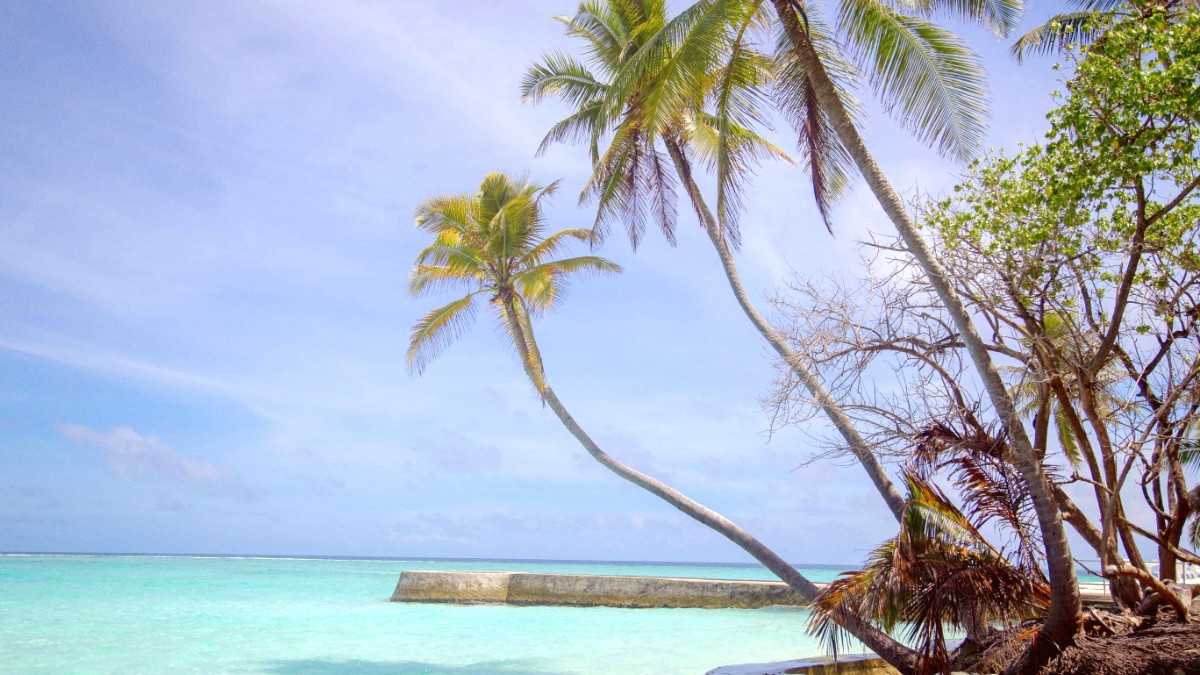
Maldives
Maldivian cuisine, known as Dhivehi Cuisine, draws deep influence from its island environment and historical trade routes, notably from India and Sri Lanka. For centuries, the local diet relied on what the ocean and land provided.
The main ingredients are fish, especially tuna, coconut in various forms, and starches like rice, breadfruit, or taro. It reflects the simple yet resourceful lifestyle of island communities.
Many traditional Maldivian dishes are eaten with the right hand, though cutlery is always provided. It is customary to wash hands before and after eating, especially if eating with hands.
Alcohol is strictly prohibited on local islands like Maafushi due to religious laws. You will not find it served in any restaurant or guesthouse on the island; it is only available on private resort islands and safari boats.
Tipping is appreciated for good service but is not mandatory. Many establishments include a 10% service charge in the bill; if so, additional tipping is not required.
A clear, traditional Maldivian fish broth, typically made with tuna. Served with rice, lime, chili, and onions. This simple yet flavorful soup is a staple.
Find it at local cafes and eateries.
A popular breakfast dish. It consists of shredded smoked tuna, finely chopped coconut, chili, and onion, often mixed with lime juice. Traditionally served with Roshi (Maldivian flatbread).
Widely available at guesthouses (often as part of breakfast) and local cafes.
This dish features a whole grilled fish, often red snapper or grouper, generously coated with a spicy Maldivian chili paste. It provides a flavorful seafood experience.
Many local restaurants catering to tourists serve Fihunu Mas.
Small, deep-fried dough balls filled with a savory mixture of smoked fish, onion, and chili. Gulha is a popular "hedhikaa" (snack).
Bis Keemiya: A savory pastry resembling a samosa or spring roll, typically filled with tuna, hard-boiled egg, and spiced cabbage. Hedhikaa refers to a variety of savory and sweet snacks. Saagu Bondibai (sago pudding) and Handulu Bondibai (rice pudding) are sweet desserts.
Numerous small, unassuming local cafes provide authentic and very affordable Maldivian meals and snacks. Fine dining, as found in high-end international restaurants, is not available on Maafushi. These experiences are exclusive to private resort islands.
Several restaurants on Maafushi cater to tourists. They offer a mix of Maldivian, Indian, Italian, and other international cuisines. You can find places serving fresh seafood, pasta, pizza, and curries.
Street food on Maafushi is generally limited to small stalls selling "hedhikaa" (short eats) or fresh fruit. You will not find extensive street food markets like those in larger Asian cities. Maafushi does not have dedicated food markets or food halls.
Vegetarian options are possible (vegetable curries, dhal, rice/noodle dishes). Vegan is challenging but doable (coconut is widely used). Clearly communicate dietary needs; staff may prepare special dishes.
Inform staff about severe allergies (nuts, seafood, dairy). Cross-contamination is a risk in smaller kitchens. Use translation apps for clarity.
All food served on Maafushi is Halal (100% Muslim country). Kosher food is not readily available; travelers should bring their own packaged food or specific ingredients.
Gluten-free is challenging (wheat in Roshi). Rice-based dishes and fresh fish are safer. Always confirm ingredients.
Formal cooking classes are rare. Some guesthouses might offer informal demonstrations of Maldivian cooking upon request.
Limited opportunities for farm visits or food production viewing. Island food supply mainly comes from fishing and imports.
Some restaurants and guesthouses offer romantic 'dine on the beach' experiences, often featuring fresh grilled seafood.
Many guesthouses arrange communal BBQs for guests, showing locally caught fresh fish.
Fresh fish is a must-try, especially grilled options, showing the island's main resource.
Directly from the ocean to your plate.
Don't miss the refreshing local fruit juices and fresh coconut water for hydration.
Tropical flavors in every sip.
Maldivian cuisine is heavily influenced by its island environment and historical trade routes, especially from India and Sri Lanka.
The cuisine reflects the simple yet resourceful lifestyle of island communities, relying on fresh catches and local produce.
Many guesthouses and restaurants offer daily catches grilled to perfection, a highlight for seafood lovers.
Beyond local dishes, Italian cuisine (pizza, pasta) and some Western options (burgers, sandwiches) are available.
Some guesthouses host communal dinners, offering a chance to sample a wide array of local dishes and socialize.
A light meal to start the day, often featuring local staples like Mashuni and Roshi.
Typically available from early morning.
The main meal, with many restaurants offering evening dining, including popular beachside options.
Often the busiest dining period on the island.
Don't miss the opportunity to taste Garudhiya, Mashuni, and various Hedhikaa at local cafes for an authentic experience.
From budget-friendly local eateries to mid-range restaurants with international menus, Maafushi has options for every preference.
Dining at local establishments directly supports the island's community and its residents, contributing to sustainable tourism.
It's a journey into the island's culture through its cuisine.